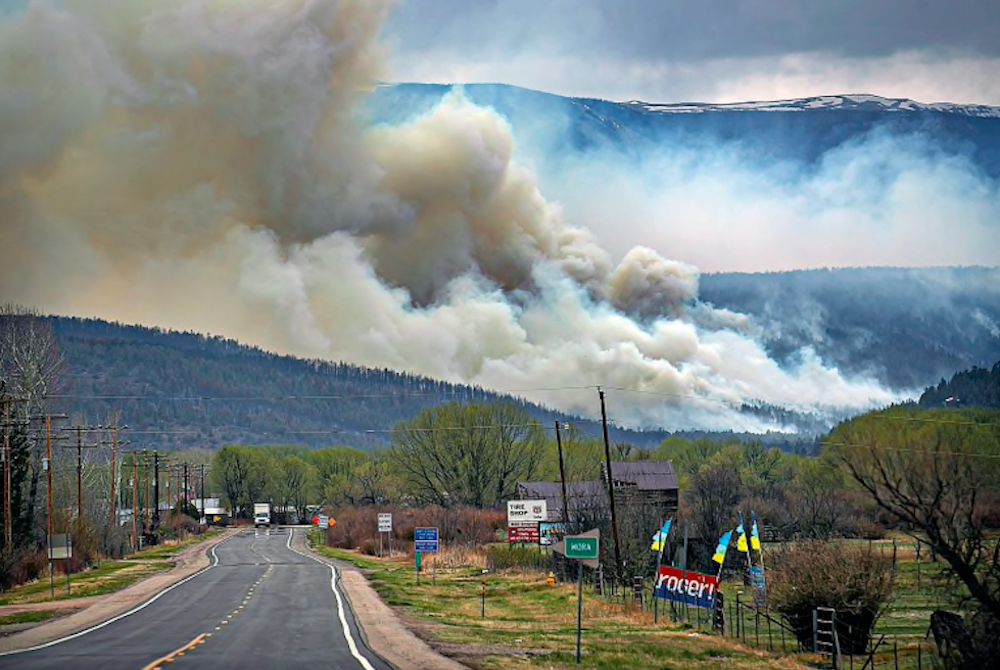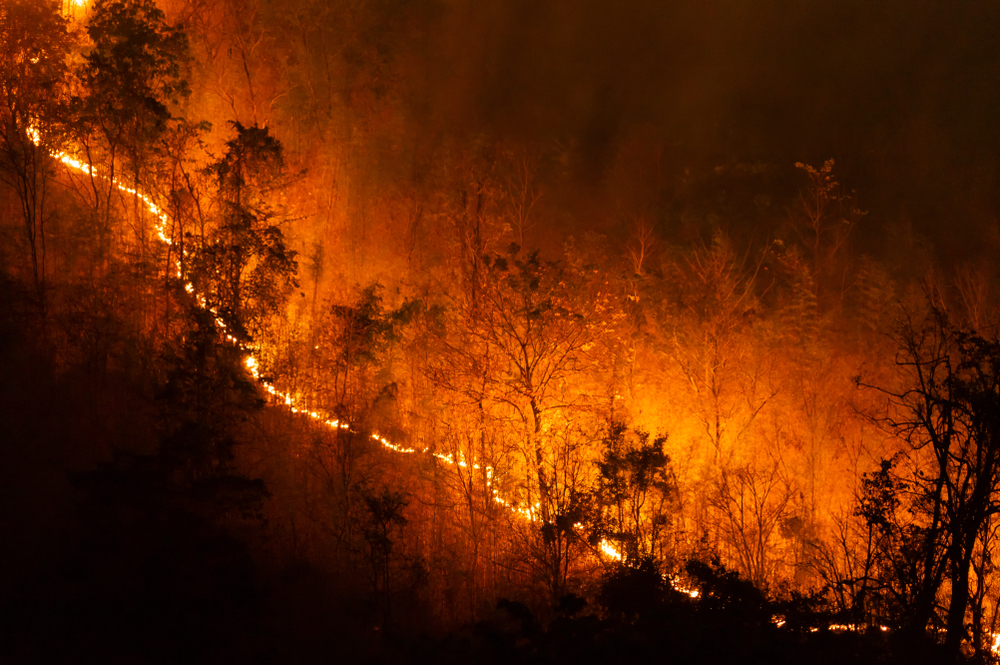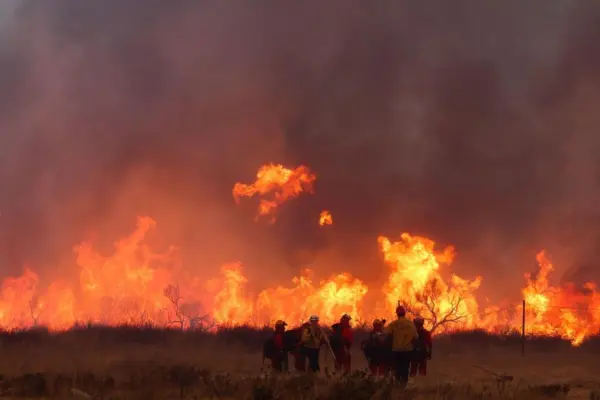US Southwest Faces Early Fire Season Amid Prolonged Drought Spell
Rising temperatures lead to early and intense wildfire season while surging tornado activity and decreasing more water from already thirsty environments
Most American states are bearing the brunt of global warming as long drought spells have hit both coasts of the country, igniting several major forest fires. While most areas of the U.S., majorly Southwest, were already dealing with drought and surging tornado activities, early fire season has posed another threat. According to the data from the U.S. Drought Monitor, 53.8 percent of the lower 48 US states were in a drought. However, there’s a slight technical improvement from the drastic low in March that stood at 60 percent drought.
But suddenly over 100 reports of tornadoes started buzzing due to severe weather throughout the South-East on April 5. Even on April 12, extreme storms were experienced in Central Texas with a 5.6-inch hailstone. Plus, an EF3 tornado spread concerns throughout Salado.
US South-West’s Early Fire Season
Besides all these threatening situations, now Arizona and New Mexico’s dangerously early wildfire season is at its peak. Many neighborhoods are in ashes already. Its effects are so devastating that even U.S. President Joe Biden issued a declaration of disaster for New Mexico on May 4. This is because, by early May, more than 600 fires broke out in two major states. These dangerous fires in the wild burned through hundreds of homes near Las Vegas, Ruidoso, Arizona, Flagstaff, and New Mexico.

Image: NBC News
Typically, fire season does not begin in the Southwest until late May or June, because the fuels that lead to fires – majorly leaf litter, woody debris, and dead grasses – don’t often dry out by then. However, due to drought and intense dry season, the U.S. Southwest is facing earlier wildfires amid climate change. With increasing temperatures, more water evaporates from the surrounding atmosphere, and snow melts quickly. This further leads to grasses and other wild fuels drying out earlier while extending the fire season, drastically.
Above all, the earlier fire season with regional strong winds leads to more rapid-fire growth. Some drastic fires that were witnessed this year in New Mexico and the Tunnel Fire near Flagstaff. Both these devastating fires were due to intense wind events.
Besides the natural wildfires, the fire season lengthening is also due to human activities, like sparks from equipment/vehicles, fireworks, and power lines. Since more people are shifting to fire-prone regions, there are more chances of human-caused ignitions.
Impact on wildlife
Due to increasing fire spreads in already dry areas, certain plant species, like brushy plants and mesquite, may survive. However, the iconic cactus that’s popular in the Southwest region of the U.S. is not adapted to fires. So, it will die due to fire exposure. Even saguaros and Paloverde trees won’t be able to survive the wildfires.

Image: Earth
Moreover, the wildlife gets impacted by the extended fire season. It is because many species depend on saguaros for feeding and nesting. Bats need nectar from the flowers. But due to an unfit environment for native plants’ survival, the wildlife will get profoundly affected.
One crucial way to reduce the chances of destructive blazes is conducting prescribed fires for eliminating the potential fuel. Historically, so much money is needed for extinguishing wildfires every year. But instead, the government needs to focus more on managing the fuels with strategies, like prescribed fires and thinning.
The infrastructure bill in 2021 also includes a big influx of fuel management funding. Plus, moving the seasonal fire crew to a full-time fire management process is another vital step to consider. Even homeowners can do their bit by simply eliminating debris and potential fuel away from their homes.
Via: NBC News


